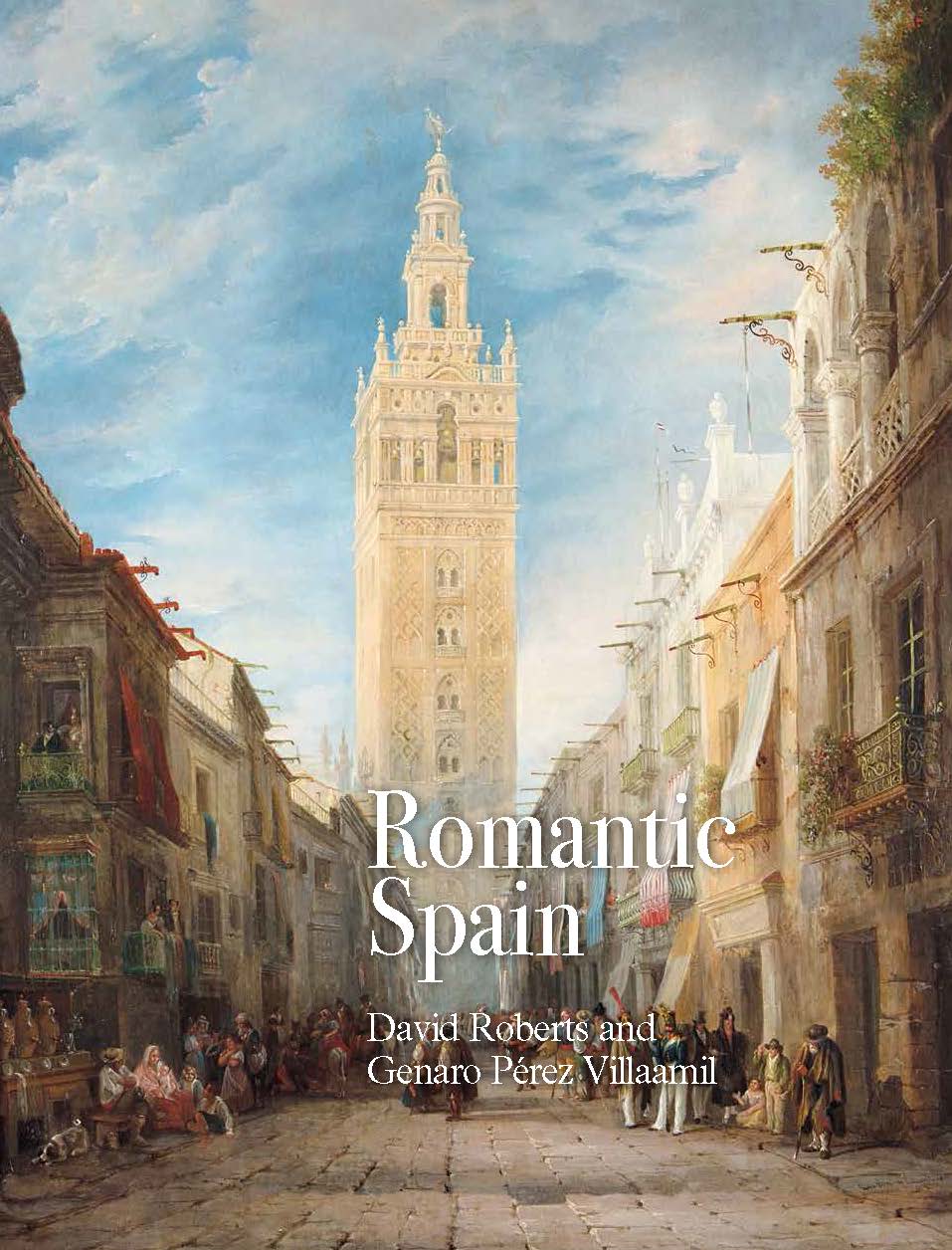Author
Claudia Hopkins (ed.), with essays by Hopkins, Matilde Mateo, and Andrew Ginger, and catalogue entries by Hopkins, Antonio Gámiz Gordo, Antonio Jesús García Ortega, Celia Jiménez Bellido, Briony Llewellyn, Krystyna Matyjaszkiewicz, Luis Ruiz Padrón, Carlos Sánchez Díez, Danielle Smith, Martin P. Sorowka.
Characteristics
512 pages; 285 colour illustrations; hardcover, 22 x 27,5 cm
Publication
English; published by the Real Academia de Bellas Artes de San Fernando, the CEEH and the Instituto Ceán Bermúdez; 2021
ISBN
978-84-18760-03-7
Price
€43,27
David Roberts (1796–1864) and Genaro Pérez Villaamil (1807–1854) were two of the most important landscape painters of European Romanticism. Their views of Spanish monuments, cities and landscapes, often coloured with a flavour of traditional life, helped to forge a Romantic image of Spain that is still palpable today.
This catalogue, which accompanies the exhibition of the same name in the Real Academia de Bellas Artes de San Fernando, offers new perspectives on the dialogue between the work of both artists in the context of the cultural discovery of the Spain, North Africa and the Middle East by artist-travellers in the nineteenth century. Adopting a comparative approach, six essays and over 120 catalogue entries written by eleven experts led by Claudia Hopkins, curator of the show and editor of this volume, cover the trajectories of both artists, starting with their first encounter in Seville in 1833.
The authors examine Roberts’s influence on Villaamil in depth for the first time and reveal important differences in their respective visions of Spain. For Roberts, Spain was a timeless and exotic nation. Although Villaamil shared Roberts’s fascination with Andalusia, he shifted attention towards the north and often defied the cultural clichés promoted by the Scottish artist. Villaamil offered a patriotic image of a Catholic Spain, which was opening itself up to progress. By the 1850s, both artists responded in similar ways to modern developments in their respective countries.
The catalogue, which includes unpublished artworks, is richly illustrated with images of drawings, paintings and prints, as well as manuscripts and ceramics, enabling the reader to draw numerous parallels.
Claudia Hopkins is professor of Art History at the University of Edinburgh and editor of the Getty-funded journal Art in Translation. She served as professor and the director of the Zurbarán Center for Spanish and Latin American Art at Durham University (UK) between 2020 and 2023. Her research focuses on nineteenth- and twentieth-century Spain. She contributed to The Discovery of Spain (National Gallery of Scotland, 2009) and among her publications are the edited volumes Pascual de Gayangos. A Nineteenth-Century Spanish Arabist (with C. Álvarez-Millán, 2008), Spain and Orientalism (with A. McSweeney, 2017), Hot Art, Cold War. European Writing on American Art 1945–1990 (with I. B. Whyte, 2020). Her book Art and Identity in Spain 1833–1956. The Orient Within is forthcoming.

